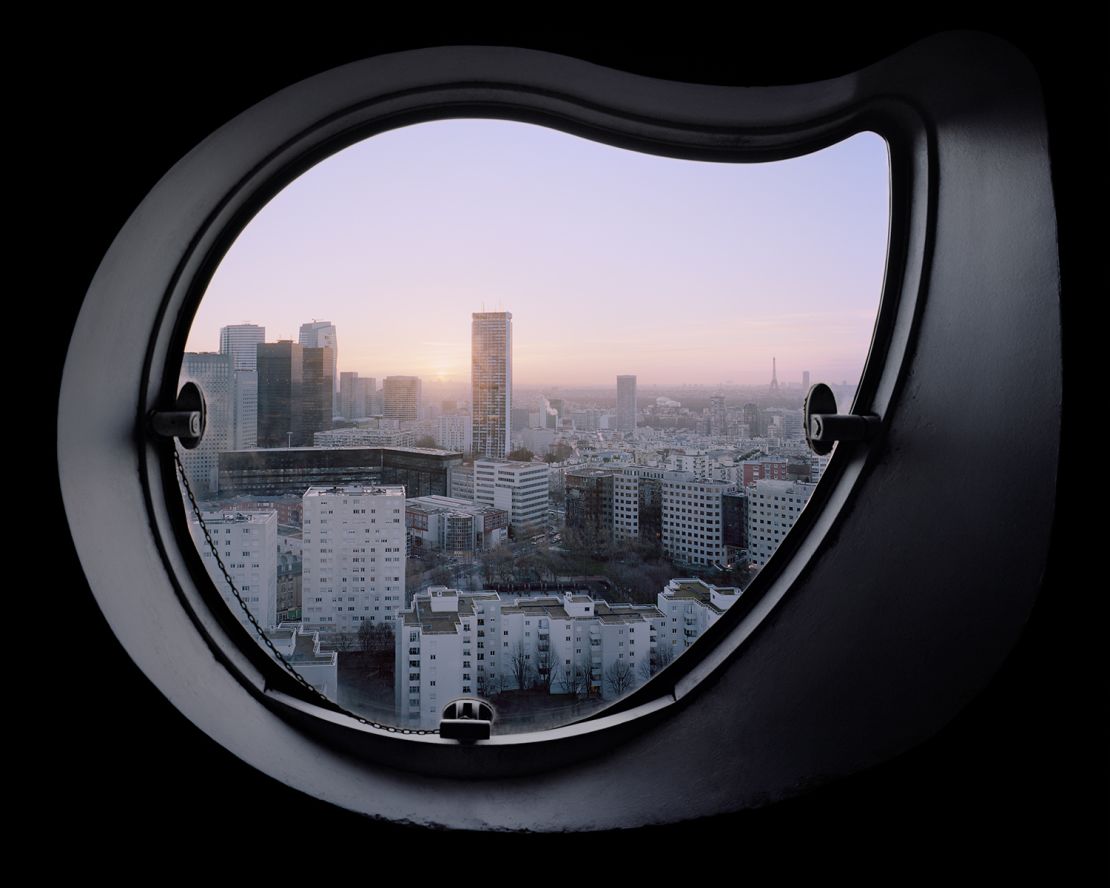When former French President Valéry Giscard d’Estaing first caught a glimpse of the Aillaud Towers, it is alleged the first words out of his mouth were “Quelle horreur!” (“How awful!”) And in truth, the distinctive towers conceived by architect Emile Aillaud in the 1970s have divided public opinion ever since.
Even now, 40 years later, announced renovations which could see the characteristic mosaic fa?ade updated have generated strong reactions, ranging from those who fear the destruction of a historic monument to those who welcome the project as a vital improvement.
Grands Ensembles
Built in the Parisian suburb of Nanterre, the Tours Aillaud were designed as part of the “Cité Pablo Picasso” – a district of social residential projects created as a response to an increasing housing shortage in Paris after World War II. Several of these colossal estates, referred to as “Grands Ensembles”, dot the outskirts of the French capital.
Laurent Kronental's 'Souvenir d'un Futur'
Conceived during a post-war economic boom, these estates were intended to be the embodiment of modernity and innovation. They were meant to increase living standards for the modern family, away from the hustle of the city. But they soon fell short of their utopian ideals, their residents increasingly stigmatized as poverty and crime crept in during the 1980s.
Photographer Laurent Kronental spent four years capturing these Grands Ensembles and the elderly who live there, “to pay tribute to this often marginalized generation before it disappears,” he said in an email. Although his first work focused on the exteriors of these gigantic housing units, he eventually befriended many of his photographic subjects who would invite him into their private homes.
A world suspended in time

His new series, “Les Yeux des Tours” (“The Eyes of the Towers”) is the result of these visits. Kronental spent two years climbing the floors of the Tours Aillaud, visiting the estate early in the morning and late in the evening to catch the melancholic, soft light that characterizes his images: “I once slept at a family’s place several days in a row to photograph the atmosphere at dawn,” he said.

“Someone of my generation even entrusted me one day with a set of his keys as they were going on holiday: sheer trust! I am more than grateful to all the residents who supported me.”
Fascinated by the diversity of the interiors of the apartments he saw, Kronental decided to focus his images on the towers’ distinctive porthole and teardrop-shaped windows. The windows symbolized the ambiguity inherent in these estates, which today remain as aging, crumbling symbols of a once-futuristic, utopian dream.
“These windows evoked traveling; they could represent the porthole of a plane, a space capsule, a dormer window of a ship.” Kronental writes, “It also appears as a Janus-like eye observing both the world outside and the world inside. They are telling features of our society and of man’s aspirations.
“I wish to invite the spectator to discover the intimacy of the housing and to find clues of human presence within this exceptional Grand Ensemble.”










!["Some pictures touch me more for diverse reasons. [In this picture] I am in a studio that belong to a man in his fifties. We switch off the light and in the darkness the two windows of his flat clearly stand out. We are at one of the last upper floors of one of the tallest towers of the district. The home is modest and simple. The panorama is gorgeous. I am speechless and feel all the poetry of the place. I do remember this photograph because during this session, my host was playing the guitar next to me. He sang oriental tunes. This melting pot of architectures, of times, of cultures, was extremely beautiful."](https://media.cnn.com/api/v1/images/stellar/prod/171011182259-laurent-kronental-yeux-des-tours-16.jpg?q=w_1500,h_1196,x_0,y_0,c_fill/h_447)

!["[In this photo] we are in the kitchen of a senior couple. The curtain slightly shrouds the outside, a soft light wraps the room, the two fruit baskets on the table catch your eye. Everything appears motionless, and nothing seems to have changed. Is it a throwback to the years 1970-80 when Emile Aillaud's work was completed, when the first inhabitants came to live in the towers? The telephone is the only sign which allows to situate the date of shooting. This is actually 2017."](https://media.cnn.com/api/v1/images/stellar/prod/171011162101-laurent-kronental-yeux-des-tours-2.jpg?q=w_1500,h_1200,x_0,y_0,c_fill/h_447)


!["On the [other hand], other people are very critical of the project. They find it impractical particularly to furnish flats, and consider its aesthetics ugly or austere. The majority of the inhabitants unanimously agree to say that the district is not maintained properly. Numerous facades have been damaged by time and small mosaic tiles crumble and fall. Besides, the apartments are not damp proofed and humidity regularly oozes in."](https://media.cnn.com/api/v1/images/stellar/prod/171011162458-laurent-kronental-yeux-des-tours-7.jpg?q=w_1500,h_1200,x_0,y_0,c_fill/h_447)























